What are Wall Stickers?
There are three main types of wall stickers available today, the latter two mainly from online stores. These are paper stickers (that many of us will remember from our childhood. Although to be fair, they have come along way since the early days), vinyl wall stickers and fabric wall stickers.
Paper Wall Stickers:
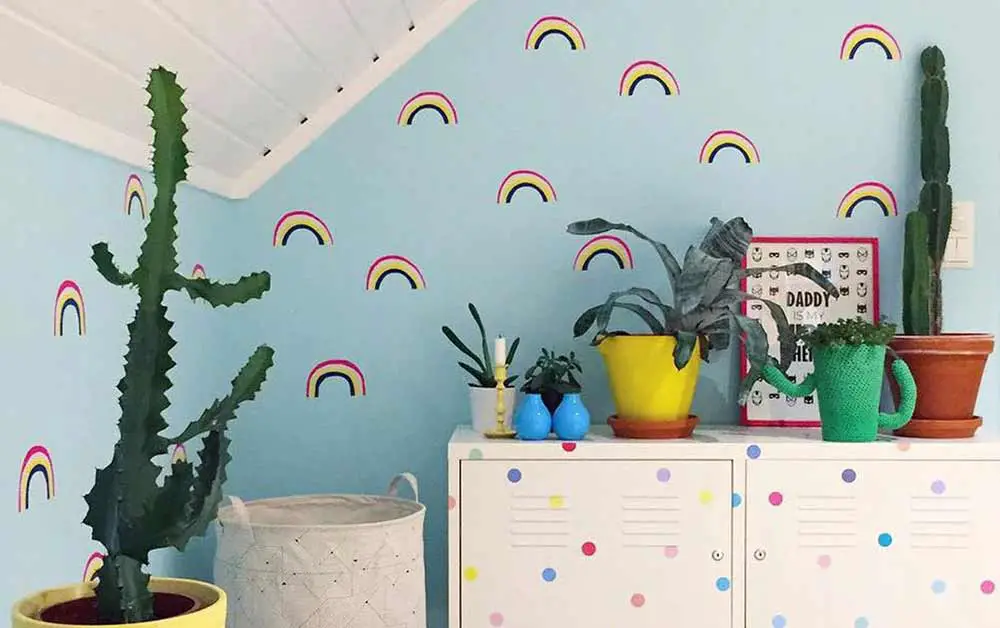
Image credit: madeofsundays.com
Paper wall stickers are sold in both bricks and mortar stores and online. They are mass produced and packaged as single sheets, often with multiple stickers or sticker parts on each, ready to simply peel and stick onto a wall or other smooth surface. They are stickier than the other options, but because of this, are also generally harder to remove.
Fabric Wall Stickers:
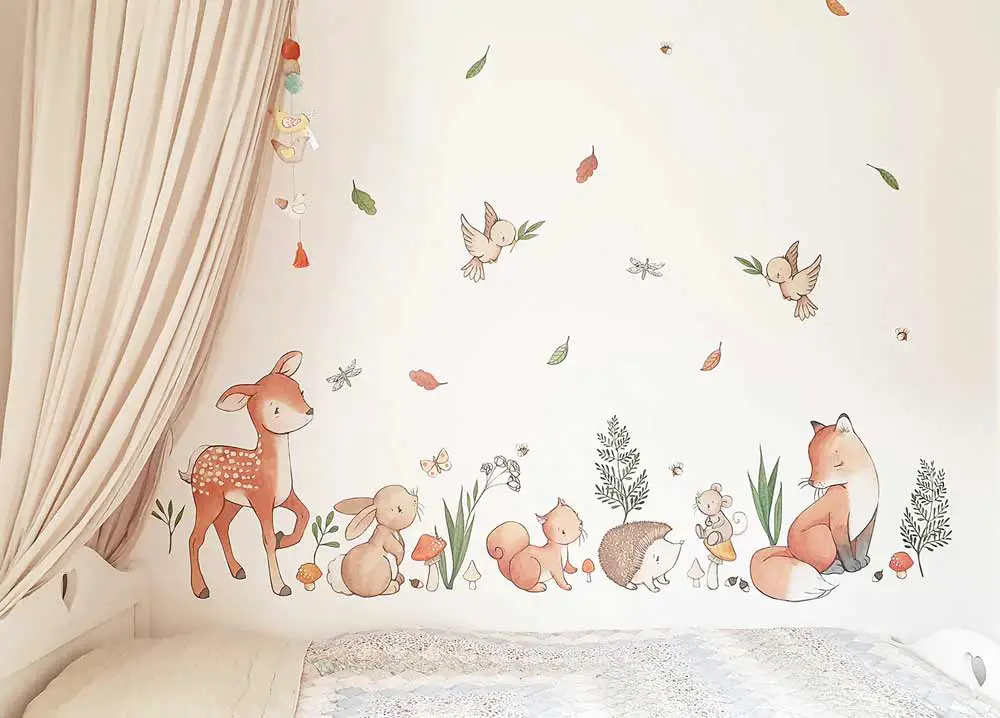
Image credit: daisyandbump.co.uk
Fabric wall stickers are soft, tear resistant and flexible. They are usually the most expensive to buy, but they can be repositioned and reapplied over and over again, with no damage to your walls. This makes them a good option for rented accommodation.
Vinyl Wall Stickers:
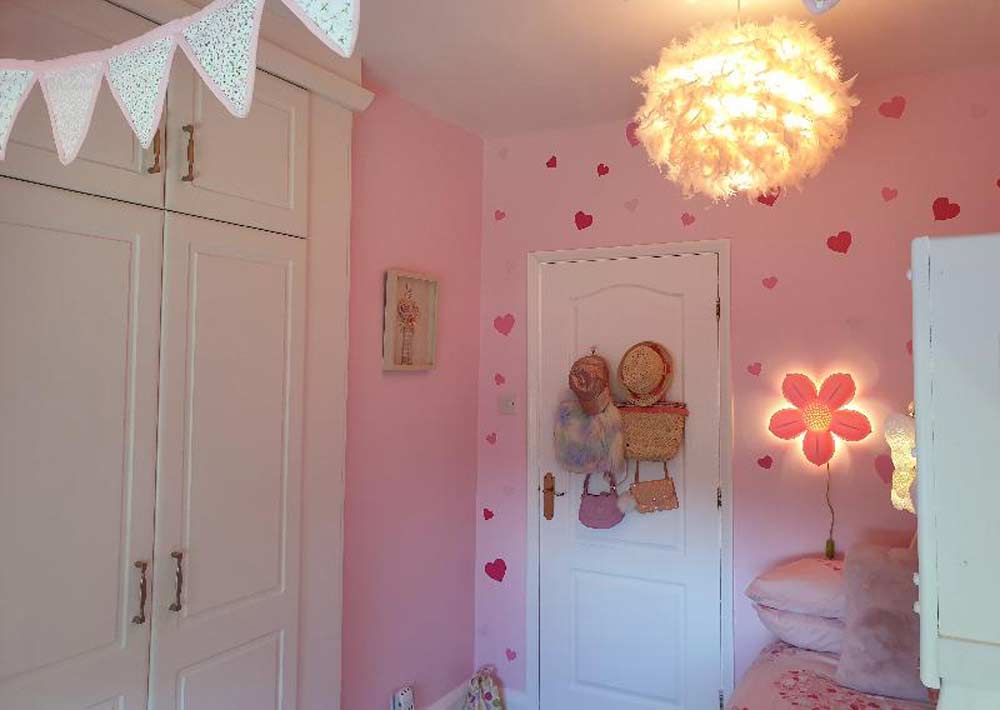
Image credit: aspectwallart.com
Vinyl wall stickers, also known as wall decals, wall vinyls or wall art stickers, are a type of transfer that can be applied to any smooth surface, both indoors and out. They are mostly used as decoration for childrens rooms, the home in general, or for businesses, such as company logos or directional information within office spaces or shops.
These are also removeable, but not reusable. This again makes them a great option for people that rent and are not allowed to decorate the walls with paint or wallpaper. Vinyl wall stickers are the most popular and cost effective of the three and certainly the most widely available.

You don't have to look far to find wall stickers in just about any design or colour you can imagine, and what you can't find can be custom made to fit your exact requirements.
So if you’re looking for a quick and easy way to add some colour or personality to your kitchen, living or bedroom walls, or wish to give your business decor a lift, wall stickers are the way to go!
For the purposes of this article, when we refer to 'wall stickers' from this point on, we mean wall stickers that are made from vinyl PVC.
What is the Difference Between Wall Stickers and Wall Decals?
Wall Stickers (made from vinyl) is simply another term for wall decals and is most commonly used in the UK. Whereas wall decals is favoured in the United States and many other countries.
Most suppliers of these types of wall sticker transfers use both terms within their websites and advertising, mainly to catch both customer queries. You will probably find that an online search for wall stickers or wall decals, will usually bring up the same vinyl wall sticker companies and available products.
How Do Wall Stickers Work?
Wall sticker designs are cut from a sheet of adhesive backed vinyl, using a precision cutting machine. Once cut and the unwanted vinyl removed, a layer of application tape is spread across the entire top. This is where the term 'transfer' comes from, as the vinyl layer is transferred from the backing paper of the vinyl sheet, to the surface that it is being applied to.
Once the wall sticker is applied and bonded to the wall or other flat surface, the transfer layer is then removed. At this point you are left with just the pre-cut sticky vinyl (wall sticker) in its intended design.
Are Wall Stickers Removable?
All wall sticker transfers are removable. However, there are a few different vinyl brands and they can vary in their adhesive tackiness. This means that some are easier to remove than others. Also, if the sticker has been applied for a long period of time, it may again be more difficult to remove.
If you're not sure whether your wall sticker is removable, it's always best to consult the manufacturer or websites help pages.
Are Wall Stickers Easy to Remove?
Wall stickers are generally very easy to remove, however, depending on how intricate the design is will determine how long this may take. A large circle with cut out text for example will probably peel off in one go, whereas text will obviously take longer, as each letter will need to be peel away separately.
Tips For Removing Wall Stickers
Please remember to always remove the wall sticker parts slowly and gently, regardless of how long it has been on the wall for. If you attempt to pull the vinyl away too quickly, there is a chance that you will peel off surface paint and damage the plaster underneath.
The first step is to gently peel back a corner of the sticker or sticker part. If it is resistant, you can use a hairdryer or heat gun to gently soften the adhesive and ease removal.
Once the sticker is loosened, slowly peel it away from the wall. If there is any adhesive residue left behind, you can remove it with soapy water, or if that doesn't work, use a glue remover.
Three factors that will affect the ease of removal are, surface smoothness, the time it has been on the wall and the temperature when removed.
Smoothness: A wall sticker that is attached to a slightly irregular or textured surface will always be easier to remove than one that is attached to something completely smooth. This is because less of the surface area of the adhesive is touching the wall.
Time: Over time adhesive bonds become stronger, which in turn means that the wall sticker will become harder to remove the longer it has been applied. Depending on the particular adhesive that the manufacturer has used, this will happen faster or slower for each case.
Temperature: Adhesives harden more in colder temperatures and soften in warmer ones. This is why gently heating the vinyl during removal makes the bond of the adhesive softer and more elastic, making removal easier.
Are Wall Stickers Reusable?
Vinyl wall stickers are unfortunately not reusable. No matter how careful you are whilst removing them, they will stretch or tear and the adhesive qualities will be reduced, deeming them very unlikely to re-stick.
Do Wall Stickers Leave Marks?
Removing a vinyl wall sticker, is unlikely to leave marks. However, there is a caveat to this, as it is impossible to predict what will actually happen until the time comes.
There are so many variables involved when it comes to whether wall sticker leave marks,. These include the time it has been on the wall, the quality of paint finish, how stable the surface is behind the paint and many more besides.
Sun fade, also known as shading or ghosting, is another thing to be aware of when a sticker is removed. This occurs when exposure to sunlight causes a surface to fade or darken. This will happen to your walls regardless, but the sticker vinyl will shield the sun where it is applied, thus leaving those areas less faded than the rest of the wall.
Do Wall Stickers Damage Paint or Wall Surfaces?
You should always be extra careful when removing wall stickers as, unless you are planning to redecorate, you don't want to pull off any paint along with the sticker.
Under normal conditions, wall stickers can be cleanly removed from regular painted walls, leaving no residue and not damaging the paintwork or wall surface behind. There are however a number of factors that can affect whether this is always the case, mainly in relation to the quality of the existing paint finish and the plaster beneath.
No matter how good the wall sticker, if the paint surface was poor when the sticker was applied, or the paint has not fully adhered to the plaster, for whatever reason, paint may come away when the vinyl is removed.
How Long Do Wall Stickers Last?
Depending on the quality of the wall sticker itself and whether it has a permanent or semi-permanent adhesive backing, it can last anywhere from a few months to several years.
Are Wall Stickers Waterproof?
As the type of wall stickers that we are talking about are made from vinyl, which is a waterproof material, they are indeed waterproof. Or a more accurate term would be water-resistant.
As long as they are applied in dry and moisture free conditions, they are fully water-resistant (which is ideal for bathrooms) and can be wiped gently with a soft damp cloth if needed.
Obviously if they have not been stuck down correctly or they are already peeling away from the wall, there is every chance that moisture could get in behind the adhesive, making the likely hood on them coming off the wall completely more likely.
Can Wall Stickers Be Used on Textured Walls?
The answer to this question very much depends on the quantity and thickness of the texture involved.
A small amount of texture, caused by a paint roller for instance, is unlikely to cause any problems for the wall sticker adhering to your wall. However, a lot of stippled texture will probably have a negative effect.
This is because the vinyl used for wall stickers does not form well to curves or undulations, it likes to site flat on the surface. So as you can imagine, in this instance, it will have a far reduced surface area to stick to.
Do Wall Stickers Stick to Wallpaper?
Vinyl wall stickers will indeed adhere to wallpaper, but you have to bear in mind the same as you would with a painted wall surface. Texture, quality of the wallpaper surface and whether the wallpaper has been painted over.
A painted wallpaper surface, assuming it is smooth, is the best option for applying a wall sticker to, as the paint creates a barrier between the paper and adhesive.
Steer clear of over textured wallpapers like anaglypta, as the wall sticker will struggle to initially attach, stay in place and may peel or fall off over time.
The biggest consideration when applying a wall sticker or wall decal to wallpaper is looking ahead to when it comes to removing it. If the wallpaper is not coated with paint, the sticker adhesive is likely to tear away parts of the paper surface. This is especially true if it has been attached for a long period of time.
Can Wall Stickers Be Used on Wood?
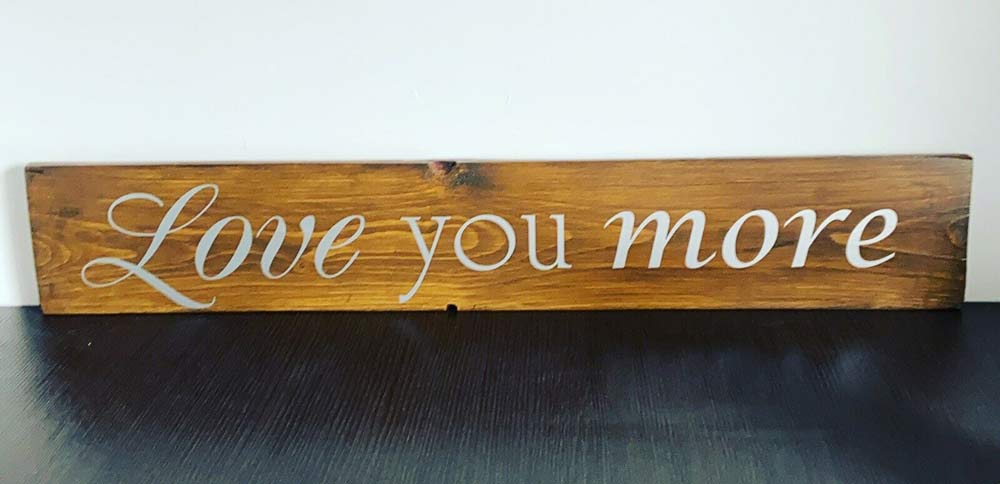
Wall stickers are a versatile form of decor and can absolutely be used on wood, whether that be drawer units, wardrobes, a bespoke family name sign or even a sign for the shed! (just beware of overly textured pieces).
As mentioned with applying to wallpaper, a painted piece of wood will always be a better surface to apply to than an unfinished one, but both can certainly work.
Always be sure to clean the surface of the wood from dust, dirt or grease before applying the sticker for the best possible adhesion.
Can Wall Stickers Be Used on Glass?
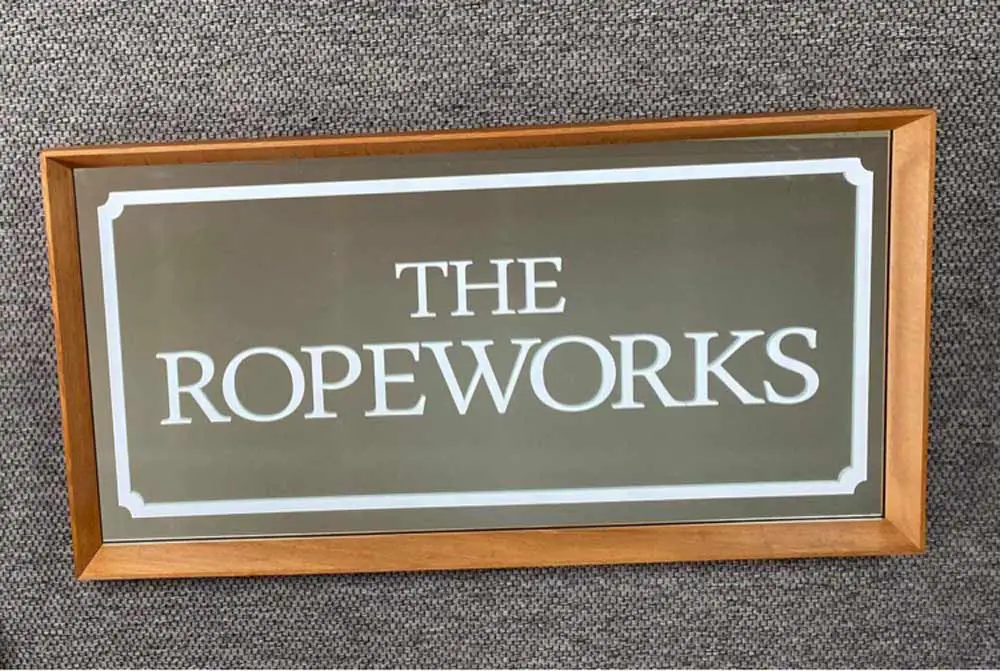
Wall stickers are great for use on glass, as it is the perfect smooth surface to adhere to. They can add a unique touch to windows, mirrors, and even glass doors.
One thing to bear in mind when applying a wall sticker to glass, is that the adhesive will grab more firmly to the surface than it will with a wall for instance. This means that you only have one chance to get the positioning correct, as once it's on, there is no removing it to reposition.
As the adhesive bond with glass is stronger, it does take more to remove wall stickers from this type of surface, but obviously the glass cannot be damaged, so this is not something that you need to worry about.
You may need to remove some residual adhesive with a glue remover, but once done, the glass will be as good as new and ready to apply your next wall sticker design!
Can Wall Stickers Be Used on Cars?
Wall stickers can indeed be used on cars, and if you have a smooth, clean surface to work with, then wall stickers are the perfect way to show off your personality or business branding on your vehicle.
Generally if applying wall sticker vinyl to a car or van, it is a good idea to only apply to areas to are mainly flat and not to curved. For forming vinyl around curves, it is important to upgrade to a specialist vinyl that can handle them much better than the ones used for wall stickers.



 Author: Matthew Chiappini
Author: Matthew Chiappini